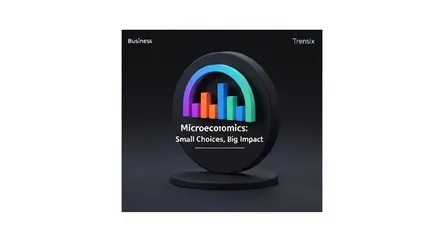Business
Microeconomics: Small Choices, Big Impact

Explore microeconomics, the study of how individuals and firms make decisions, influencing prices, supply, and demand in everyday markets.
What is it?
Microeconomics is the branch of economics that focuses on the behavior of individual economic agents, including households and firms, and their interactions in specific markets. Unlike macroeconomics, which looks at the economy as a whole, microeconomics zooms in on the smaller picture. It analyzes the factors that influence individual choices, such as how prices are determined and how supply and demand interact to create market equilibrium. Core concepts include utility, production costs, market structures (like competition and monopoly), and labor markets.
Why is it trending?
Microeconomic principles are constantly relevant because they explain the daily economic phenomena we experience. With ongoing global discussions about inflation, supply chain disruptions, and shifting consumer habits, understanding microeconomics is crucial. It provides the framework for analyzing why the price of gasoline changes, how a new tech product is priced, or the potential effects of a minimum wage increase. Businesses rely on it for strategic decisions, and policymakers use it to design effective regulations and taxes, keeping it a hot topic in financial and political news.
How does it affect people?
Microeconomics directly impacts everyone's daily life and financial decisions. It explains why your salary is what it is, how you decide to spend your money, and why some goods are cheaper than others. Understanding its principles helps you become a more informed consumer, investor, and voter. For example, it can clarify the trade-offs involved in choosing a job, buying a house, or starting a business. It provides the tools to understand the incentives that drive people and companies, empowering individuals to navigate the economic world more effectively.